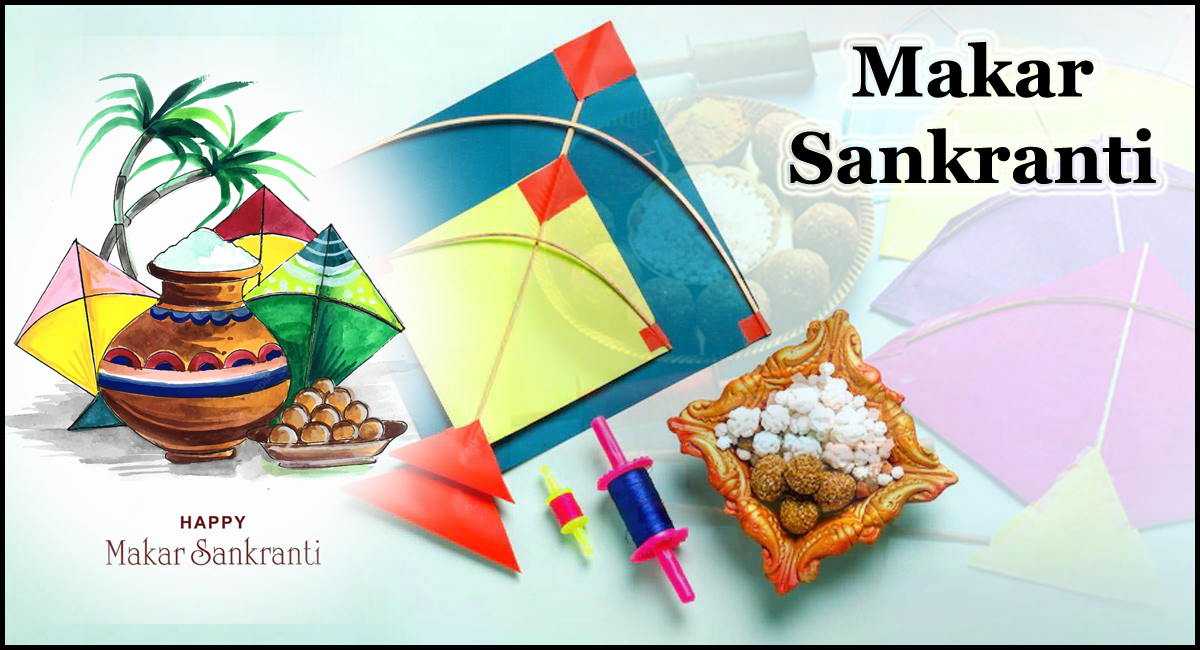
Makar Sankranti: Introduction
Makar Sankranti, also known as the harvest festival, holds a significant place in the Indian cultural calendar. This vibrant and joyous festival marks the transition of the sun into the zodiac sign of Capricorn, symbolizing the end of winter and the onset of longer days. With its deep-rooted traditions, delectable feasts, and colorful festivities, Makar Sankranti brings communities together to celebrate nature’s bounties and express gratitude.
The Origins and Significance
Ancient Roots and Cultural Diversity
Makar Sankranti’s origins trace back thousands of years, reflecting the rich diversity of Indian culture. Celebrated with distinct names and customs across various regions of India, such as Pongal in Tamil Nadu, Lohri in Punjab, and Bihu in Assam, the festival’s essence remains consistent: celebrating the harvest season and expressing gratitude for nature’s blessings.
Astronomical Significance
Aligned with the solar calendar, Makar Sankranti falls on January 14th or 15th each year. This alignment signifies the sun’s transition into the zodiac sign of Capricorn, also marking the end of the winter solstice. The festival signifies the gradual lengthening of days, symbolizing the triumph of light over darkness.
Rituals and Traditions
Flying Kites and Symbolism
One of the most iconic aspects of Makar Sankranti is the soaring kites that adorn the sky. As families and friends also gather on rooftops, the kites symbolize the letting go of past troubles and embracing new beginnings. The vibrant colors and shapes of the kites create a mesmerizing spectacle against the backdrop of the clear blue sky.
Bonfires and Community Bonding
In various parts of India, lighting bonfires is an integral part of the festivities. Lohri, celebrated on the eve of MakarSankranti, sees communities gathering around bonfires, singing and dancing to traditional tunes. These bonfires foster a sense of togetherness and warmth during the winter months.
Culinary Delights
Til Laddoos and Pongal
Makar Sankranti is synonymous with mouthwatering treats made from sesame seeds and jaggery. Til laddoos, a sweet delicacy, are exchanged as tokens of goodwill. In the southern state of Tamil Nadu, Pongal—a dish prepared with freshly harvested rice, also lentils, and jaggery—is savored, symbolizing abundance and prosperity.
Regional Flavors
The festival’s culinary celebrations vary across regions, showcasing the diverse flavors of India. In Assam, a traditional feast called Bhogali Bihu features an array of delectable dishes prepared with freshly harvested ingredients. Similarly, Uttarayan in Gujarat is celebrated with an assortment of snacks like chikkis, undhiyu, and kite-shaped cookies.
Spirituality and Cultural Heritage
Bathing in Sacred Rivers
Makar Sankranti holds spiritual significance, with devotees taking holy dips in rivers like the Ganges, Yamuna, and Godavari. Bathing during this auspicious time is believed to cleanse the soul and bring blessings for a prosperous year ahead.
Paying Homage to the Sun: Sankranti
The festival also pays tribute to the sun god, Surya, with devotees offering prayers and performing rituals at temples dedicated to him. These acts of devotion are a reminder of the vital role the sun plays in agriculture and sustaining life.
Conclusion: Makar Sankranti
Makar Sankranti is more than just a festival; it’s a celebration of life, gratitude, and unity. As kites soar high and bonfires blaze, people come together to honor nature’s bounty and embrace the changing seasons. This vibrant tapestry of traditions, culinary delights, and also spiritual rituals showcases India’s cultural richness and the profound connection between humans and the natural world.
Also Read – The Evolution of YouTubers: From Hobbyists to Influential Creators
Makar Sankranti FAQs
1. When is Makar Sankranti celebrated?
MakarSankranti is typically celebrated on January 14th or 15th each year.
2. What is the significance of flying kites during Makar Sankranti?
Flying kites symbolizes letting go of past troubles and embracing new beginnings.
3. How is Makar Sankranti celebrated in Assam?
In Assam, MakarSankranti is also celebrated as Bhogali Bihu with feasting and cultural performances.
4. What is the traditional dish of Makar Sankranti in Tamil Nadu?
Pongal, a dish made from freshly harvested rice, lentils, and also jaggery, is a traditional delicacy in Tamil Nadu.
5. Why is taking a holy dip during Makar Sankranti significant?
Taking a holy dip is believed to cleanse the soul and bring blessings for a prosperous year ahead.
Also Read – Ginger : A Versatile Spice with Health Benefits

2 thoughts on “Makar Sankranti: Celebrating the Transition of Seasons and Spirit”